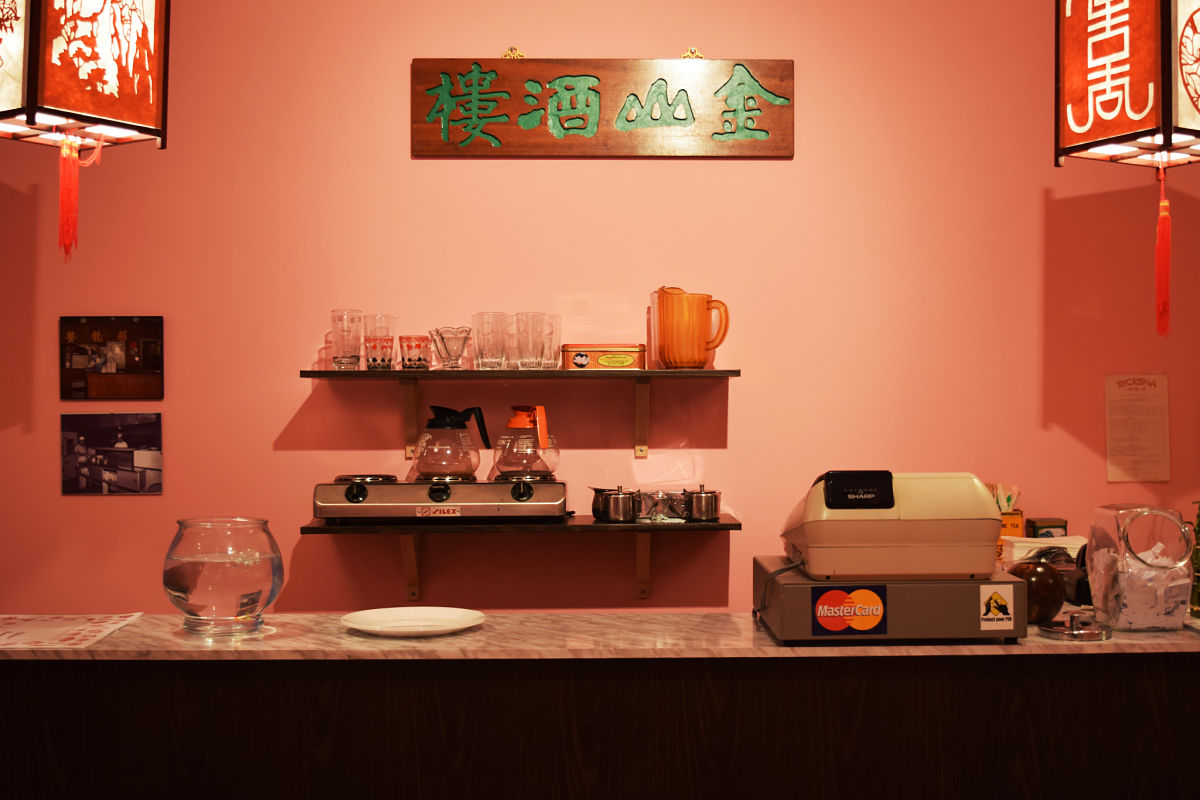Chinese Canadians have had a tumultuous history throughout the country’s development, from migrant workers being exploited to construct the Canadian Pacific Railway to the blatantly discriminatory legislations such as the Head Tax from 1885 to 1923 and the Chinese Immigration Act whose policies persisted until 1967. Efforts at trying to remedy these injustices, like the 1988 Multiculturalism Act, often failed to acknowledge and address the institutionalized xenophobia that plagued these populations. Though Canada praises its embrace of diversity, the truth is that Cultural Essentialism – a view that cultural entities require a set of characteristics to define their identity – has and continues to pervade many aspects of our society. Our laws and our people may not explicitly say it, but racism and segregation towards the Chinese community endures to this day. In the wake of Canada’s Sesquicentennial, along with the rise of political polarization, it is an opportunity to examine the roots of these inequities and how they translate to recent and current generations.
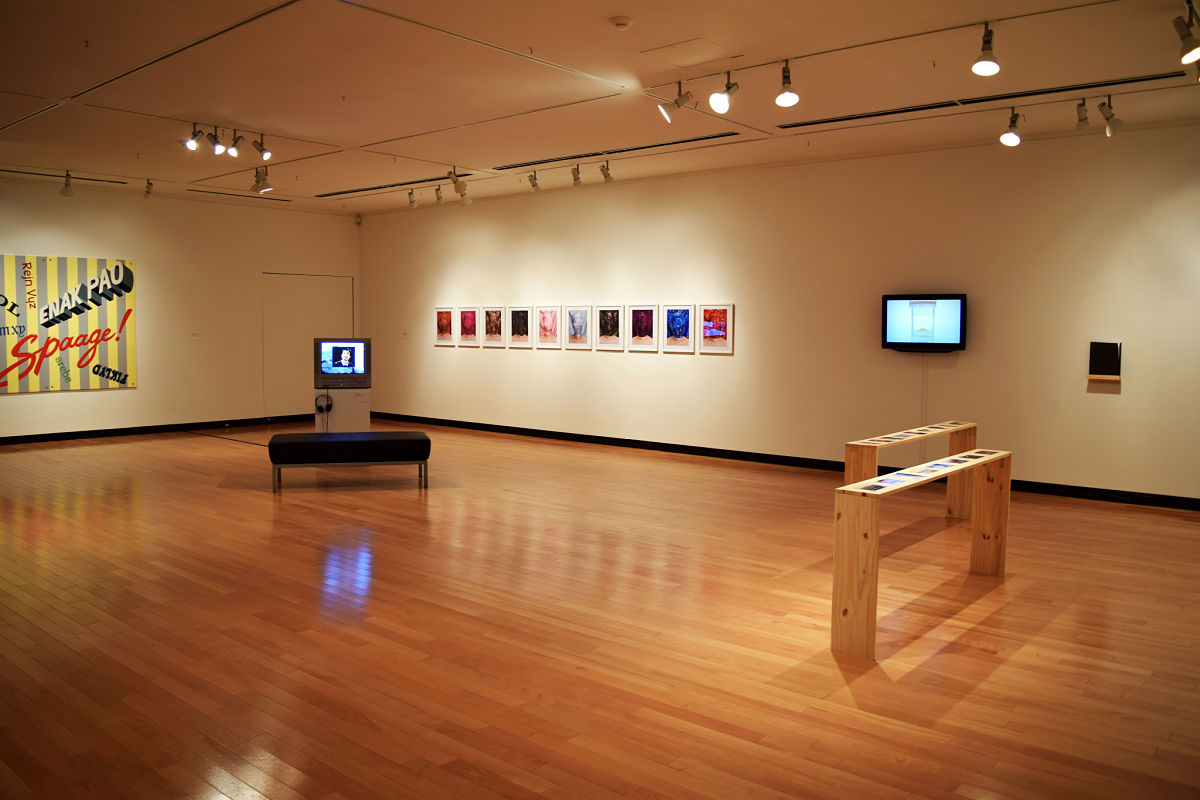 Installation view of Far and Near: The Distance(s) Between Us at the Art Museum University of Toronto
Installation view of Far and Near: The Distance(s) Between Us at the Art Museum University of Toronto
Therefore, the purpose of Far and Near: The Distance(s) Between Us is meant to illuminate this divide and how this community is perceived, treated, and often overlooked. This group exhibition draws from the experiences of eleven Canadian artists of Chinese heritage to examine historical and societal narratives that shape their identities. Distance here describes both the geographical distances associated with immigration and the country’s own expanse as well as the cultural distances that externally and internally isolate an otherwise diverse group of ethnicities and traditions.
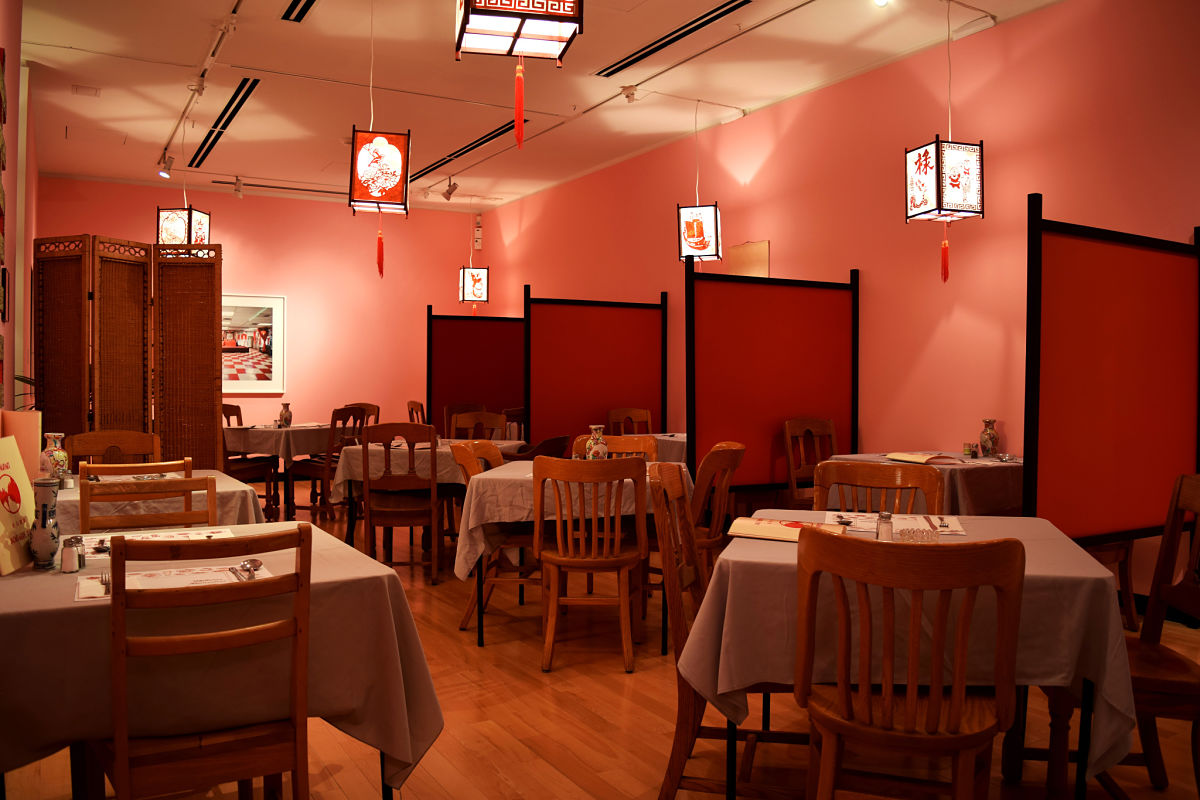 Karen Tam, Gold Mountain Restaurant or Montagne d’Or
Karen Tam, Gold Mountain Restaurant or Montagne d’Or
The works on display explore many facets of their cultural identity: language, education, modern domestic life, faith, tradition, and cuisine among many others. Moreover, the exhibition cumulatively demonstrates the under-representation of Asian-Canadian artists within the sphere of contemporary, and by consolation historical, art. With a combination of photographs, videos, painting, printed and written works, and installations, this exhibition emphasizes the array of issues and complexities challenging them. As only one example, half of the gallery space has been converted into the Gold Mountain Restaurant or Montagne d’Or. Karen Tam recreated the interior of a Chinese restaurant with intricate and meticulous detail. The ornate dividing screens, the hanging lantern lighting, the sales counter, and even the dinner menus are carefully considered to emulate her memories of living in French Canada. It further incorporates video footage of the daily inner workings of the restaurant and its infusions of personality.
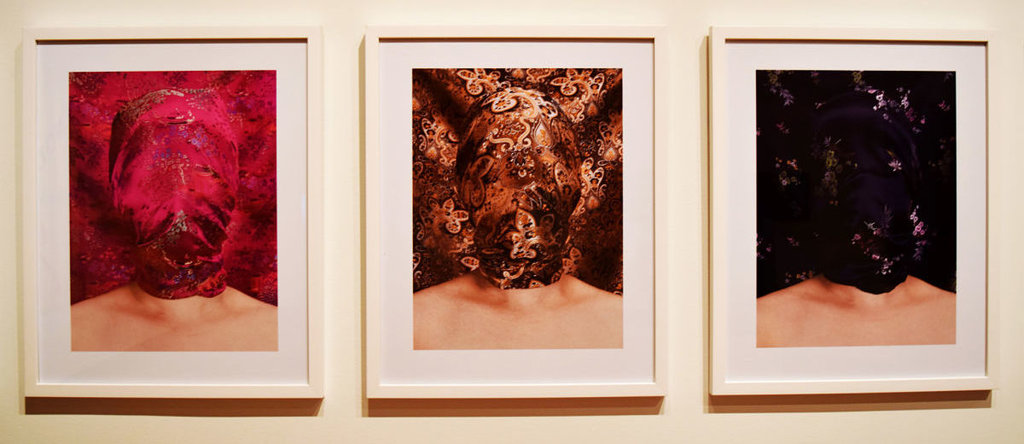 Chun Hua Catherine Dong, Skin Deep
Chun Hua Catherine Dong, Skin Deep
The series of photographs by Chun Hua Catherine Dong, titled, Skin Deep examines shame in relations to the body, associated with vulnerability in its personal and socio-political dimensions. In these images the artist examines the word shame (to cover) as a cultural symbol. She wraps her face with beautiful Chinese silk, giving the images the mixed meaning of beauty and danger, since it is suffocating under the fabric as we can see in the accompanying video. She emphasizes the notion of shame, or “losing face”, that is deeply rooted in Chinese culture, meaning to let down yourself, your family or culture. Under the silk the artist literally and metaphorically loses her face and with it her Chinese identity as well.
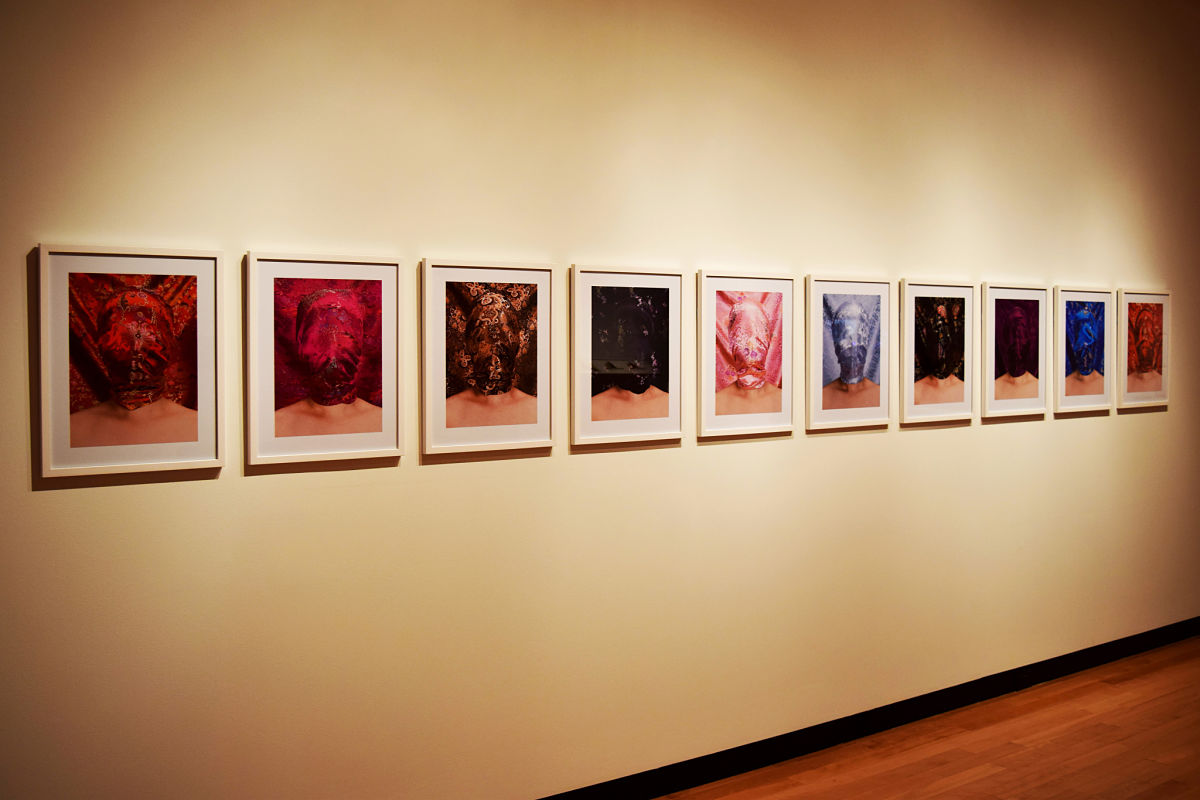 Installation view of Chun Hua Catherine Dong, Skin Deep
Installation view of Chun Hua Catherine Dong, Skin Deep
Chih-Chien Wang in Jelly Project #1 – A Collective body, combines architecture, body and machine by using jelly, a popular Chinese dessert. As the jelly goes through the process of congealing it preserves the time, light, sound, smell; everything that surrounds it, creating a one-of-a-kind documentation, one that can not be decoded. Ken Lum, is known worldwide for his conceptual and representational art that often deals with social and individual identity. Untitled (Language Painting) addresses the difference between cultures through the words they use, giving a historical hint as well through their typological appearance.
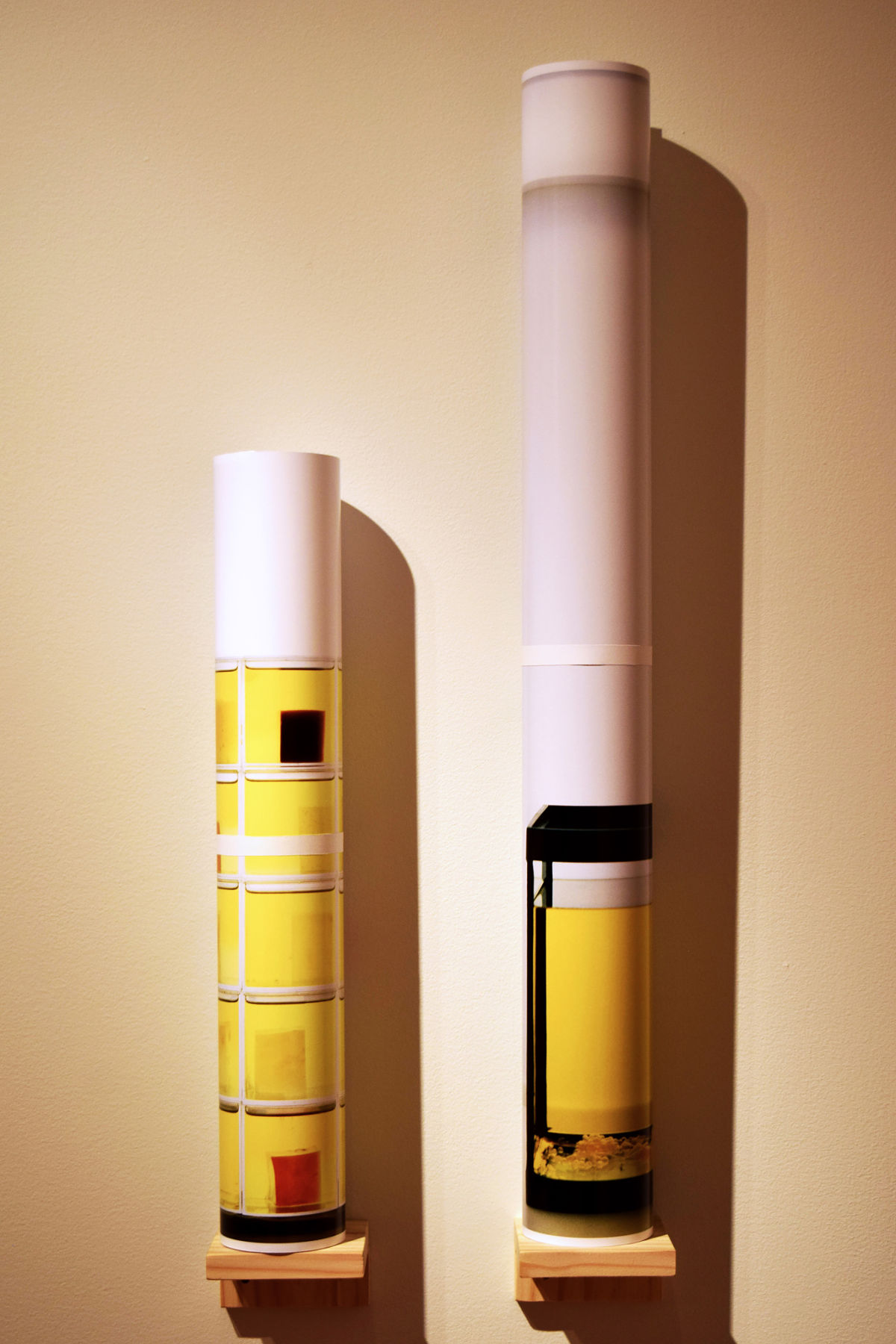 Chih-Chien Wang in Jelly Project #1 – A Collective body
Chih-Chien Wang in Jelly Project #1 – A Collective body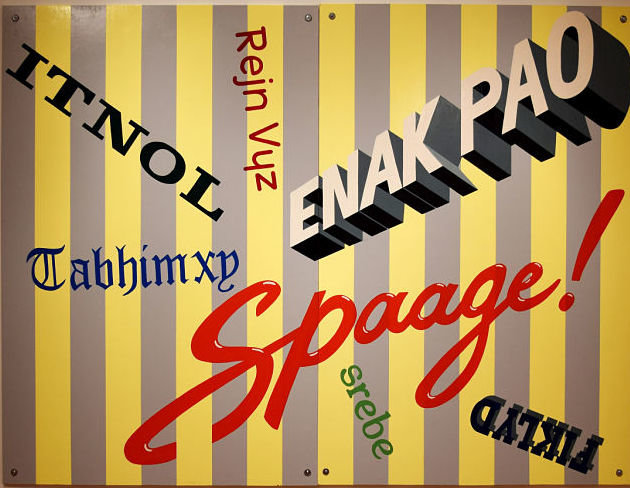 Ken Lum, Untitled (Language Painting)
Ken Lum, Untitled (Language Painting)
Far and Near: The Distance(s) Between Us is an elaborate, multi-faceted delve into the entrenched divisions and cultural constraints affecting the lives of Chinese Canadians. The group of artists – Alvis Choi (aka. Alvis Parsley), Chun Hua Catherine Dong, Gu Xiong, Will Kwan, Ho Tam, Ken Lum, Morris Lum, Karen Tam, Chih-Chien Wang, Paul Wong, Winnie Wu, and curator Henry Heng Lu – draw out their own experiences to best encapsulate the diaspora.
Text and photo: Simon Termine
*Exhibition information: September 6 – October 29, 2017, Art Museum University of Toronto, Justina M. Barnicke Gallery, 7 Hart House Circle, Toronto. Gallery hours: Mon – Fri, 12 – 5; Sat, 1 –5 pm.

